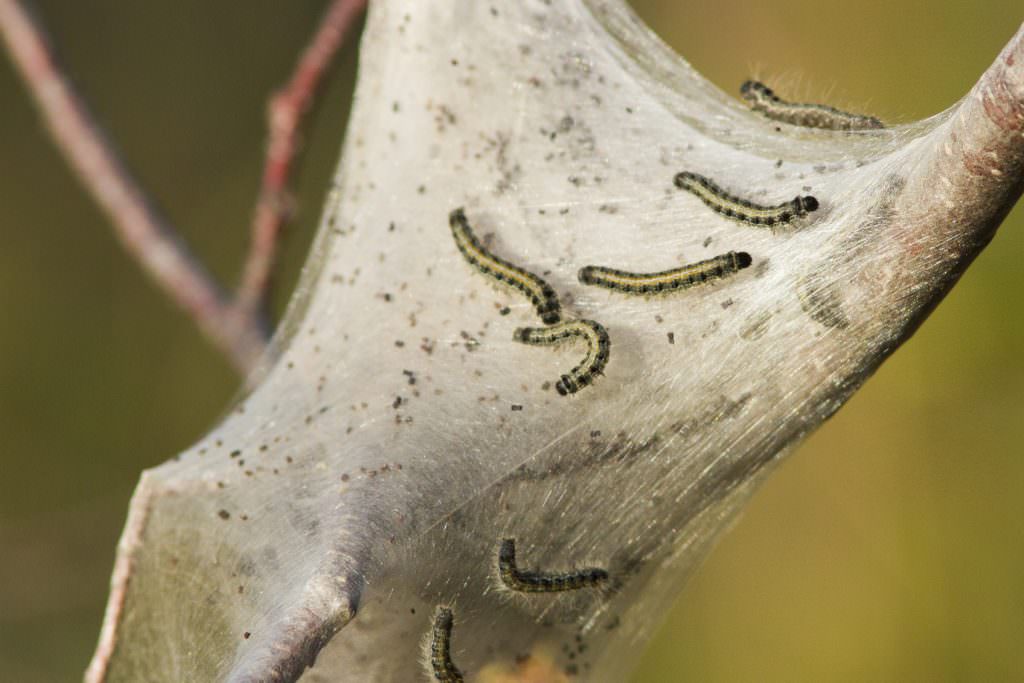Attention insects: we’re not here to paint you all with a broad brush. We know some of you do good work. There are bees, of course, helping to pollinate so many of our plants. And then there are the numerous bugs that feed on garden pests.
No, it’s these shrub and tree pests we want to address today: who they are and how to deal with them. Read on to learn more about treatments for tree and shrub insects and disease control in PA & NJ.
Emerald Ash Borers
We’ve written before about these insidious pests, metallic green insects that feed on a tree’s phloem, a term for the tissue that transmits nutrients and water inside the tree. Unfortunately, symptoms of an infestation aren’t apparent until up to three years after the EAB gets inside your tree.
The key symptoms are dieback in the upper part of the tree canopy and new shoots of growth below these dead areas. If left unchecked, these insects will destroy your entire ash tree population.
This pest is best treated before there are any signs of problems. There are a number of insecticide treatments that are helpful against the emerald ash borer in PA, but the most effective treatments are preventative.
Aphids
In large groups, these small, gluttonous green insects cause leaves to become yellow, curled and warped. Some aphids also inject a toxin into plants, distorting growth. Aphids aren’t exactly destructive, but they’re such vociferous eaters that their feeding will ultimately weaken a tree or shrub, putting it in danger of other health problems.
Most hardware stores or garden supply shops will sell you an insecticide to control aphids. Be sure to read the instructions before applying, as some insecticides can harm other plants. You can also cut away sections of plants that contain aphids, which will slow their spread. Even washing them away with a strong blast from your garden hose can help limit their damage! If the insect persists or is causing major damage, we can effectively treat for these common pests.
Japanese Beetles
These little critters came to America in 1916, and remain a headache for gardeners 100 years later. Left unchecked, they can severely defoliate a tree, sometimes in a matter of days. Even worse, they’re a multi-generational threat: they’ll lay eggs that turn into grubs, and those grubs will feast on your grass. To spot them, look for holes in your leaves.
We offer several insecticide options for Japanese Beetles. Sprays can be effective when timed correctly, but you may need to do more than one application of insecticide. We also offer systemic treatments made to the soil of trees but these must be done prior to the insects appearing as a preventative treatment.
Hemlock Wooly Adelgid
Like its name suggests, this aphid-like insect threatens the health of hemlock trees. It has shown up in 16 states, although some of the most severe infestations have been recorded in Pennsylvania and New Jersey. They feed on the starch reserves within eastern and Carolina hemlocks, leading to the ultimate decline and death of the trees.
We offer a number of treatment options including horticultural oil, insecticide sprays, and systemic treatments to the trunk or roots.
Tent Caterpillars
 You’ll recognize these pests when you see their nests – large silken constructions. They tend to feed on the leaves of landscape trees and – in large numbers – can cause major defoliation.
You’ll recognize these pests when you see their nests – large silken constructions. They tend to feed on the leaves of landscape trees and – in large numbers – can cause major defoliation.
If you spot a caterpillar on your leaves, remove it by hand. Use gloves or a stick to pull their nests from your tree, and then drop it in a bucket of soapy water. When leaves drop in the fall, check the tree for clusters of eggs. Scrape them from the branch and destroy them.
If you need help treating these or any other tree or shrub pests, contact Willow Tree and Landscape Services Inc.
We’ve been protecting trees and shrubs for our customers for more than 30 years, and have extensive experience in dealing with emerald ash borers.
Let us help you deal with the pests on your property, making it a place where your plants – along with the good insects that live there – can thrive.

